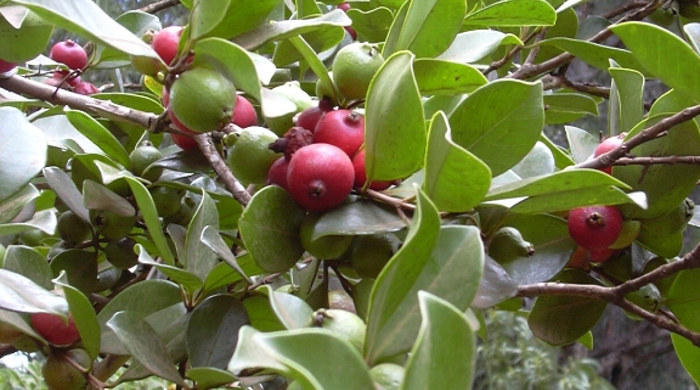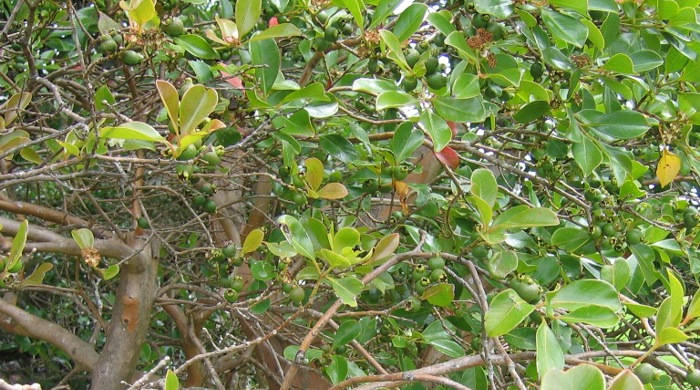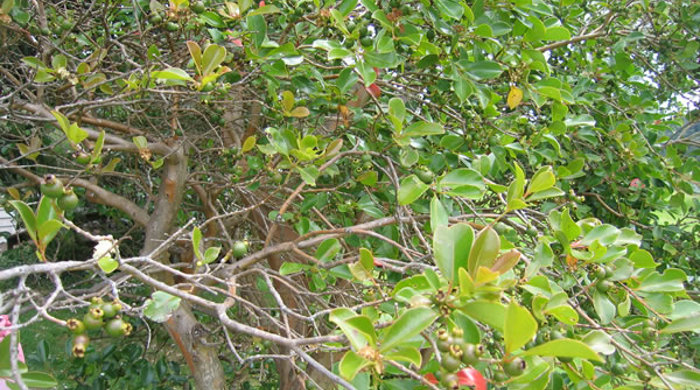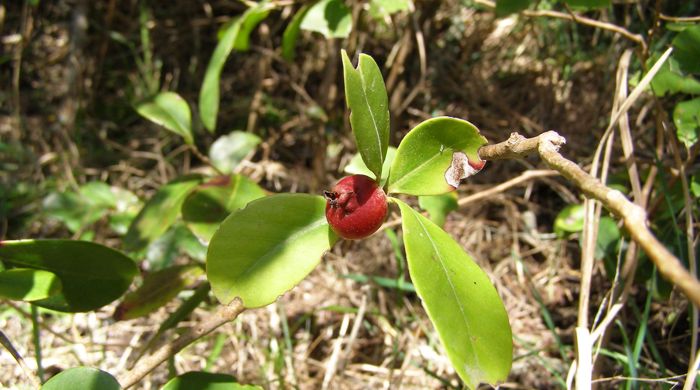Psidium cattleianum
Guava
Also known as:
Cherry guava, Strawberry guava, Yellow cherry guava, Psidium littorale, Psidium guava var. littorale.
Family: Myrtaceae
Origin: Brazil
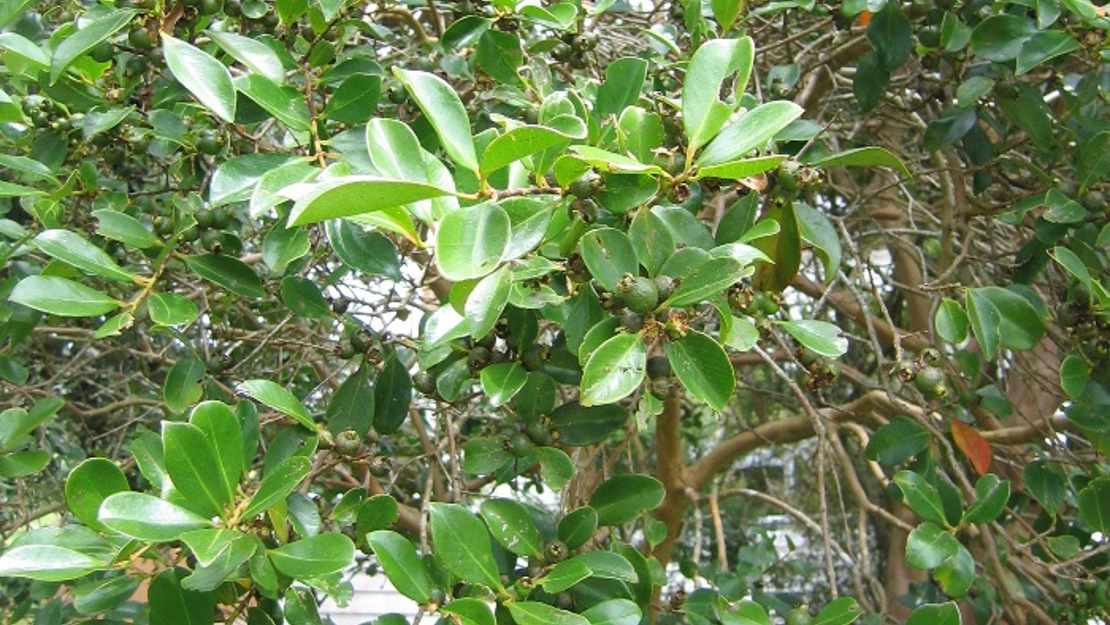
Regional Pest Management Plan (RPMP) status
- Whole region — Sustained control
- Hauraki Gulf Controlled Area Notice pest
General description
Large shrub or small tree < 6 m tall. Leaves are smooth, oval and < 5 cm long. Flowers are white. Fruit is round, 2 cm in diameter and green, ripening to dark purple/red (rarely yellow).
What you need to know
To help protect our environment, from 1 September 2021, you:
- will not be allowed to breed, distribute, release or sell guava within the Auckland region.
- will not be allowed to plant guava within the Auckland region, unless you are transferring an existing plant on your land to another location within the boundaries of the same property.
- must destroy any guava on land that you occupy if it has been planted in breach of the above rules and you are directed to do so by an authorised person.
Habitats
Forest, shrub, gardens, plantations.
Dispersal
Seeds dispersed by birds and mammals. Vegetative spread from suckering.
Impact on environment
Can form monocultures and invade intact native forest vegetation. Reduces native recruitment and restructures the vegetation profile of forests. May exacerbate impacts from animal pests such as possums and feral pigs by providing an important food source.
Control
Site Management
Follow up treated areas 3 times per year. Encourage natural regeneration of native plants or replant treated areas where possible after 2-3 treatments to establish dense ground cover and minimise reinvasion.
Recommended approaches
Physical control
Method: Dig out.
Plant parts requiring disposal: Seeds.
Disposal options: Remove to greenwaste or landfill if practical.
Biocontrol
Biocontrol is currently not available for this species.
Community agrichemical control recommendations
No qualifications: Cut stump and paste freshly cut base of stems with metsulfuron gel. Large stems can be frilled and pasted with metsulfuron gel.
Basic Growsafe certified: Cut stump and spray freshly cut base with 5g metsulfuron-methyl per 1 L of water.
Certified Handler/Experienced agrichemical user: Foliar spray with 5g metsulfuron-methyl per 10L of water and 20ml penetrant.
Caution: When using any herbicide or pesticide please read the label thoroughly to ensure that all instructions and safety requirements are followed.
